I'm developing a Neural net, and for visualization I'm writing a UserControl in WPF.
The following code draws the neurons:
<UserControl x:Class="ExcelAddIn.LogView"
xmlns="http://schemas.microsoft.com/winfx/2006/xaml/presentation"
xmlns:x="http://schemas.microsoft.com/winfx/2006/xaml"
xmlns:mc="http://schemas.openxmlformats.org/markup-compatibility/2006"
xmlns:d="http://schemas.microsoft.com/expression/blend/2008"
mc:Ignorable="d"
d:DesignHeight="300" d:DesignWidth="300">
<UserControl.Resources>
<DataTemplate x:Key="ellipse">
<Grid Margin="0,10,0,0">
<Ellipse Width="50" Height="50" Fill="Red" Stroke="Black" StrokeThickness="2"/>
<TextBlock HorizontalAlignment="Center" Text="{Binding Input, StringFormat=N2}" TextAlignment="Center" Margin="0,10,0,0"/>
<TextBlock HorizontalAlignment="Center" Text="{Binding Output, StringFormat=N2}" TextAlignment="Center" Margin="0,22,0,0"/>
</Grid>
</DataTemplate>
<DataTemplate x:Key="panel">
<ScrollViewer VerticalScrollBarVisibility="Auto" Width="70" Margin="100,0,0,0">
<ItemsControl x:Name="Items" ItemsSource="{Binding Neurons}" ItemTemplate="{StaticResource ellipse}"/>
</ScrollViewer>
</DataTemplate>
</UserControl.Resources>
<Grid>
<ItemsControl x:Name="Panel" ItemsSource="{Binding Layers}" ItemTemplate="{StaticResource panel}">
<ItemsControl.ItemsPanel>
<ItemsPanelTemplate>
<StackPanel Orientation="Horizontal"/>
</ItemsPanelTemplate>
</ItemsControl.ItemsPanel>
</ItemsControl>
</Grid>

I would like to draw lines between the Neurons like this:

So for each neuron in the specific layer should have a line to each neuron in the next layer (drawing all the lines would made it harder to understand, so I didn't draw all the lines on the illustration). I would like to achieve this with binding. Is it possible? (I don't care if my existing code needs to be refactored, if that solves my problem.)
Note: I have a Weight object (a line would represent this weight). One Weight object has reference to two Neurons, a double, that is the weight between them and some other properties. And the weigths can be accessed from the datacontext of the usercontrol.
Thank you.